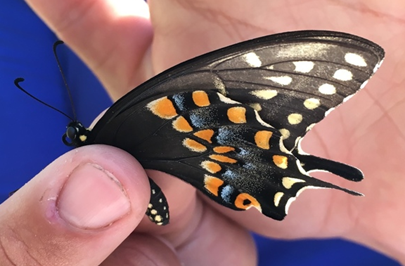Why Care About Butterflies?
|
Pollinators, and the ecosystems that rely on their biological services, are threatened by habitat loss, agricultural practices, and diseases.
Butterflies comprise approximately 20,000 species globally. They serve as important biodiversity indicators for ecosystem health and provide food for many organisms such as migrating birds. We are currently collecting baseline data on public lands in order to protect threatened species and conserve habitats. |
Collecting Data That Will Drive Change
|
The vast majority of wild pollinator data is collected in close proximity to urban areas.
Adventure Scientists has joined forces with the University of Arizona to establish the first large-scale backcountry dataset that identifies butterfly abundance, diversity, and distribution as well as host plant phases across remote portions of their ranges. |
Once the data is processed and compiled, public land managers can use it to inform decisions about prescribed burning, protection of threatened species, and forest planning.
Field Site Locations
NOTE: Please allow up to 30 seconds for map information to load.
What to Expect as a Volunteer
Western U.S.We are seeking volunteer teams of trail runners, backpackers, and mountain bikers to net, photograph, and release butterflies at pre-selected backcountry sites several times a year. We are currently
accepting volunteer applications for the 2018 field season (May-October). Our current focus areas are:
If you live near one of these areas and are interested in adopting a field site for the 2018 season, please considering applying. |
GlobalOur data-collecting efforts extend all over the globe.
We are seeking adventurers to gather baseline data on butterflies and host plants in remote areas. As a volunteer, without catching or handling the butterflies, you will photograph them and their host plants and upload the observations to the iNaturalist mobile app. You can select your own field sites anywhere in the world, as long as they are at least one mile from the nearest road. |



